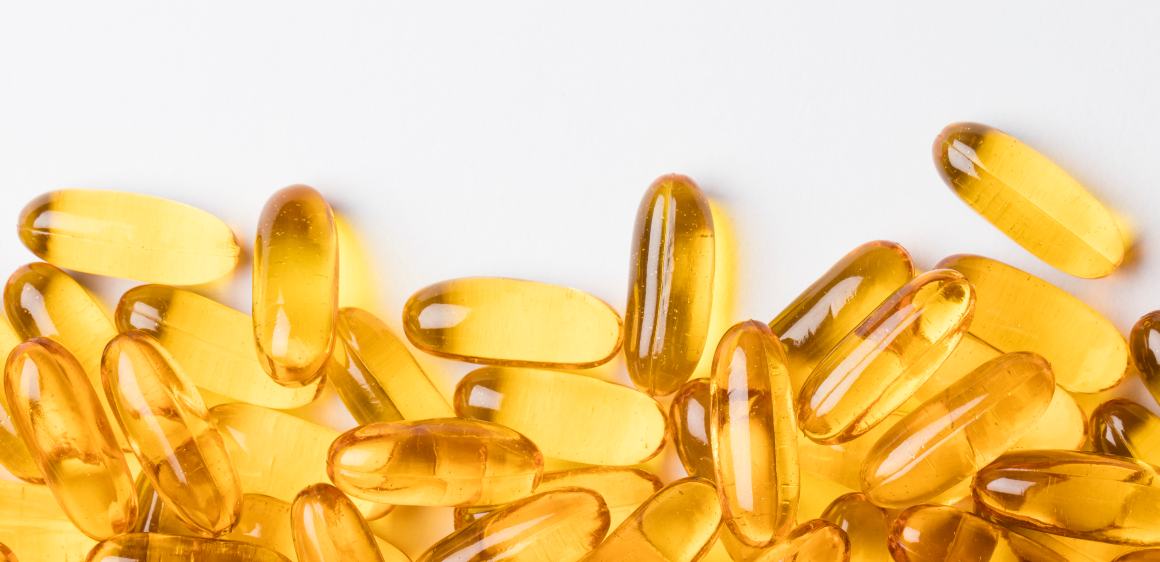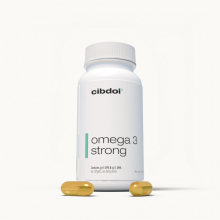How is Omega-3 Best Absorbed?
Published:
Omega-3 fatty acids are an important part of a healthy diet. They provide many benefits for heart, brain, eye, and joint health. However, in order to reap these benefits, it's important that your body is able to properly absorb the omega-3s you consume. Here is an in-depth look at how omega-3 fatty acids are absorbed and how you can maximize absorption.
Contents:

Overview of Omega-3 Fatty Acids
Before diving into absorption, let's first provide an overview of what exactly omega-3 fatty acids are and why they are important.
What are Omega-3s?
Omega-3 fatty acids are a type of polyunsaturated fat found naturally in foods and dietary supplements. The three main omega-3s are:
- Eicosapentaenoic acid (EPA) - Found mainly in fish and seafood
- Docosahexaenoic acid (DHA) - Also found in fish and seafood
- Alpha-linolenic acid (ALA) - Found in plant sources like flaxseed, chia seeds, and walnuts
EPA and DHA are primarily found in animal sources and they are sometimes referred to as “marine omega-3s.” ALA is found in plant sources and is known as a “plant-based omega-3.”
Why Are Omega-3s Important?
There is strong evidence that omega-3 fatty acids provide many health benefits, including:
- Heart health - Omega-3s can help lower triglycerides, reduce blood pressure, prevent erratic heart rhythms, and lower the risk of heart attack and stroke.
- Brain health - DHA plays a key role in brain development and function. Omega-3s may improve memory and prevent cognitive decline.
- Eye health - DHA is a major structural component of the retina. Omega-3s help prevent macular degeneration.
- Joint health - Omega-3s can reduce inflammation that causes joint pain and may help prevent rheumatoid arthritis.
- Child development - Omega-3s are extremely important for babies both in the womb and after birth for brain, nerve, and eye development.
Given the wide range of benefits, it's clear why getting adequate omega-3s from your diet or supplements is important for overall health.
How Are Omega-3s Absorbed by the Body?
Now that you know why omega-3s are so beneficial, let's look at how they actually get absorbed and put to use in the body once consumed.
Digestion of Fats Begins in the Mouth and Stomach
The digestion process for fats like omega-3s begins in your mouth as you chew your food. Chewing helps break down the fat molecules and provides more surface area for enzymes to work on.
As food moves from your mouth down to your stomach, gastric enzymes continue breaking down the fats. The acidic environment of the stomach also helps separate fats from other components of your meal.
Bile Emulsifies Fats in the Small Intestine
After leaving the stomach, partially digested food enters the small intestine, where the majority of nutrient absorption occurs. This is where fats really get broken down in preparation for absorption.
Your liver produces bile, which gets stored in the gallbladder and released into the small intestine when you eat a meal containing fat. Bile acts as an emulsifier that breaks large fat globules down into smaller droplets. This emulsion process gives digestive enzymes a much larger surface area to work on.
Pancreatic enzymes called lipases are also released into the small intestine when dietary fats are present. The lipases break the fat droplets down even further into individual fatty acids and monoglycerides.
Fatty Acids Get Packaged Into Micelles
The individual fatty acids and monoglycerides that are produced in the small intestine can’t be directly absorbed through the intestinal wall on their own. They first need to be repackaged into bundles called micelles.
Bile acids and phospholipids cluster together with the fatty acids and monoglycerides to form the micelles. This allows these fat digestion products to dissolve in water and be transported to the surface of the intestinal cells for absorption.
Fatty Acids Cross the Intestinal Cell Membrane
At the surface of the intestinal cells, the fatty acids and monoglycerides contained within the micelles are able to leave the water-based environment and enter the cell membrane.
Transport proteins shuttle the fatty acids across the cell membrane and into the inside of the intestinal cells. Inside the cells, the fatty acids are reassembled back into triglycerides.
Reformed Triglycerides Enter Lymphatic System
Once reformed into triglycerides, the fat molecules are too large to directly pass into the bloodstream. Instead, they are packaged into chylomicrons — lipoprotein particles that transport fat.
The chylomicrons containing the repackaged triglycerides enter the lymphatic system, which runs parallel to the bloodstream. The lymphatic system transports the chylomicrons to the thoracic duct, which empties into the subclavian vein near the heart.
Triglycerides Empty Into Bloodstream
From the subclavian vein, the chylomicrons containing the newly absorbed triglycerides enter the bloodstream. At this point, they can be transported throughout the body to supply tissues with energy and essential fatty acids.
As the triglycerides travel through the bloodstream, an enzyme called lipoprotein lipase breaks some of them back down into free fatty acids. These liberated fatty acids are taken up by cells like heart muscle cells and brain cells that need them.
So in summary, dietary fats like omega-3s go on quite a journey to get absorbed - getting broken down and repackaged several times. Proper bile production and pancreatic enzyme function are essential to this process.
Factors That Affect Omega-3 Absorption
Now that you understand the complex process fat absorption entails, it makes sense that there are several factors that can affect how well omega-3s get absorbed. Here are some of the key factors:
Type of Omega-3 Consumed
One major factor that impacts omega-3 absorption is the form you consume them in. As mentioned earlier, there are three main types: ALA, DHA, and EPA.
ALA has the lowest bioavailability compared to DHA and EPA. One study found that only about 5-10% of ALA gets converted to EPA and less than 0.5% makes it to DHA.
In contrast, absorption of the pre-formed DHA and EPA found in fish oil is much higher, in the range of 70-85%.
So while plant sources of ALA like flaxseeds still provide benefits, fish oilomega-3 supplements yield more EPA and DHA for better absorption.
Fat Content of Meal
Consuming omega-3s as part of a high-fat meal enhances absorption compared to a low-fat meal. Dietary fats stimulate bile secretion and pancreatic enzyme release, which improves the breakdown and absorption of the omega-3s.
One study found that absorption of omega-3s from salmon was highest when consumed as part of a meal containing avocado (a source of heart-healthy monounsaturated fat).
Food Matrix
The food matrix simply refers to the other food components omega-3s are consumed with. Food components that delay gastric emptying, like proteins and fibers, may slightly reduce the absorption rate of omega-3s.
However, any effects on absorption appear to be small. Omega-3 absorption from fish oil supplements taken with a high-protein meal was similar to taking the supplement alone in one meta-analysis.
Supplement Quality
When taking omega-3 supplements, the quality matters for proper absorption. High quality omega-3 products will have high potency with lower levels of saturated fats and oxidation.
Lower quality supplements may contain excess saturated fats that can compete for absorption with the omega-3s. And oxidation can damage the fragile omega-3 molecules.
Gastrointestinal Health
Proper digestion and absorption relies on having a healthy GI system. Conditions like celiac disease, Crohn’s disease, and cystic fibrosis can damage the intestinal lining and impair nutrient absorption.
Production of bile and digestive enzymes can also be reduced in certain gastrointestinal conditions. Medications like cholesterol drugs and immune suppressants may also affect fat digestion.
Age
Some research indicates that fat absorption may become less efficient as we age. One study in adults over 60 found significantly lower serum DHA levels after fish oil supplementation compared to younger adults.
Declines in bile acid and enzyme production as well as reduced intestinal blood flow may contribute to poorer omega-3 absorption in the elderly.
Tips to Maximize Omega-3 Absorption
Here are some evidence-based tips to help you get the most out of the omega-3s you consume from foods and supplements:
- Choose fish, krill oil, or algal oil - These provide pre-formed DHA and EPA for superior absorption over plant-based ALA. Look for oils that are purity tested.
- Take with a meal containing fat - Pairing omega-3s with healthy fats promotes optimal digestion and absorption.
- Minimize processed carbs - Large amounts of refined carbs can increase inflammation and intestinal permeability, which may impact absorption.
- Stay hydrated - Adequate water intake keeps your digestive system functioning properly.
- Limit alcohol - Excess alcohol impairs fat digestion and can damage the intestinal lining.
- Exercise regularly - Physical activity optimizes gastrointestinal function and promotes better nutrient absorption.
- Manage stomach acid - Heartburn medication can reduce acid needed for digestion. But also get treated for excess acid if it's inhibiting absorption.
- Supplement with enzymes if needed - Those with fat malabsorption may benefit from lipase or bile acid enzymes.
- Eat more fiber - Soluble fiber like psyllium husk can improve fat absorption for some individuals.
Optimizing how you take omega-3s as well as your overall GI and lifestyle habits can ensure your body is able to utilize these critical fatty acids once consumed. This will help you reap the full spectrum of health benefits.
How is omega-3 best absorbed? Conclusion
In summary, omega-3 fatty acids provide a wide range of health benefits, but only if they are properly absorbed by the body. Absorption is a complex process requiring digestion by stomach acid, bile, and pancreatic enzymes in order to eventually transport omega-3s across the intestinal wall to be delivered throughout the body.
Factors like the type of omega-3s consumed, GI health, age, and lifestyle habits can all impact how well these fats are absorbed. Choosing high quality, purified fish, krill or algal oils and taking with fat containing meals are key recommendations to maximize your absorption potential. Implementing healthy lifestyle strategies such as staying active, staying hydrated, and managing stomach acid can also go a long way towards optimizing your intake of these beneficial fats.















